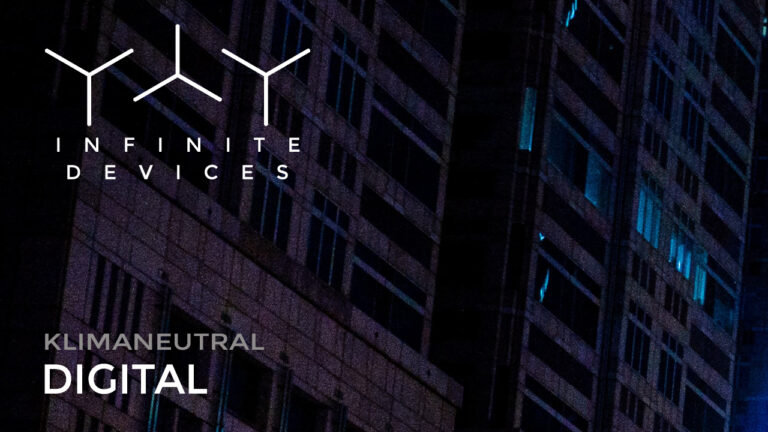Climate-neutral digital

The climate-neutral city needs digitization
Digitization could make a major contribution to the climate target being pursued in Germany. The development towards smart cities will lead to high CO₂ savings in cities and metropolitan areas and make an important contribution to the desired climate target. Studies predict average annual growth in the smart city market of more than 20 percent up to 2026. Cities are responsible for almost three quarters of greenhouse gas emissions and are also increasingly suffering from the effects of climate change. Building “climate smart” infrastructure is becoming increasingly important as most future population growth is expected to take place in urban areas.
A smart city is a city that uses information and communication technologies (ICT) and the Internet of Things (IoT) to improve the quality and performance of city services such as energy, transport and infrastructure uses to control resource consumption and reduce overall costs. The overarching goal of a smart city is sustainability. According to a new report by the United Nations Development Program (UNDP), cities are responsible for 70 percent of global greenhouse gas emissions. And they are highly exposed to many of the climate change impacts they contribute to, particularly heat stress, flooding and health emergencies. Making cities more resilient, sustainable, inclusive and safe is one of the United Nations Sustainable Development Goals that requires sustained investment. This rethinking is triggered by challenges such as climate change and the limits to growth.
The goals of the Smart City are the sustainable use of renewable resources and the renunciation of non-renewable resources. Many of the methods used to reduce greenhouse gas emissions in smart cities rely on sensors to either record real-time consumption information or detect residents’ activities. To be effective, many of these sensors must be reconnected to a central processing system to enable data analysis and process automation. What is important here is a circular economy with low transport intensity and a sustainable economy. An important factor is the co-responsibility and active participation of the population. Smart city visions contain ideas for regional commodity cycles, that things should be produced where they are consumed. In the field of energy, solar thermal energy for the local generation of hot water, photovoltaics or geothermal energy are important building blocks. A major challenge of the Smart City lies in the realization of the socio-cultural dimension of sustainability.
What policy needs to do: Address potential gaps in 5G deployment to enable full smart city development. The “neutral host” model could be deployed to fill gaps in 5G coverage without undermining the overall momentum of competing national carriers. This might require some political intervention. Access to fiber will be fundamental for 5G. Mobile operators need enough bandwidth to connect all of their different sites to their networks, so policy makers need to put in place a regulatory framework that allows operators the fiber access they need. The full potential of smart cities will probably only be realized if there is widespread 5G coverage in these cities. While operators may have good incentives to provide extensive outdoor 5G coverage in cities, problems are emerging: so far, cellular coverage along transport routes is often poor. This may be due to significant physical limitations of the equipment to be installed and on-site access restrictions for safety reasons. Smart cities rely heavily on the efficient use of transport. Extensive Indoor Coverage: Cellular operators have typically provided indoor coverage by relying on outdoor signals to penetrate buildings. This can limit certain IoT applications like turning heating elements on and off as they are typically installed in the middle of buildings that may not have coverage. infinimesh protects sensitive data – 100% GDPR compliant
The security gaps and vulnerabilities on the commonly used data stores, so-called open source platforms, are a major risk. The Magdeburg start-up Infinite Devices has dealt with exactly this problem. infinimesh is the first platform that works 100 percent according to the guidelines of the General Data Protection Regulation. The Infinimesh AIoT functions are used because they can recognize patterns, read developments from data and extrapolate potential failures – far more effectively than humans. Supply chain process optimization via automated reorders or suggestions for defective components. This also minimizes errors during operation.
Digital technologies and services enable high CO2 savings in cities and metropolitan areas, according to the study “The Smart City Market in Germany, 2021-2026”. consulting firm Arthur D. Little and the Eco association. According to the study, digitization is therefore indispensable for the path to a climate-neutral city and for achieving the German climate target of 55 percent CO2 reduction by 2030
